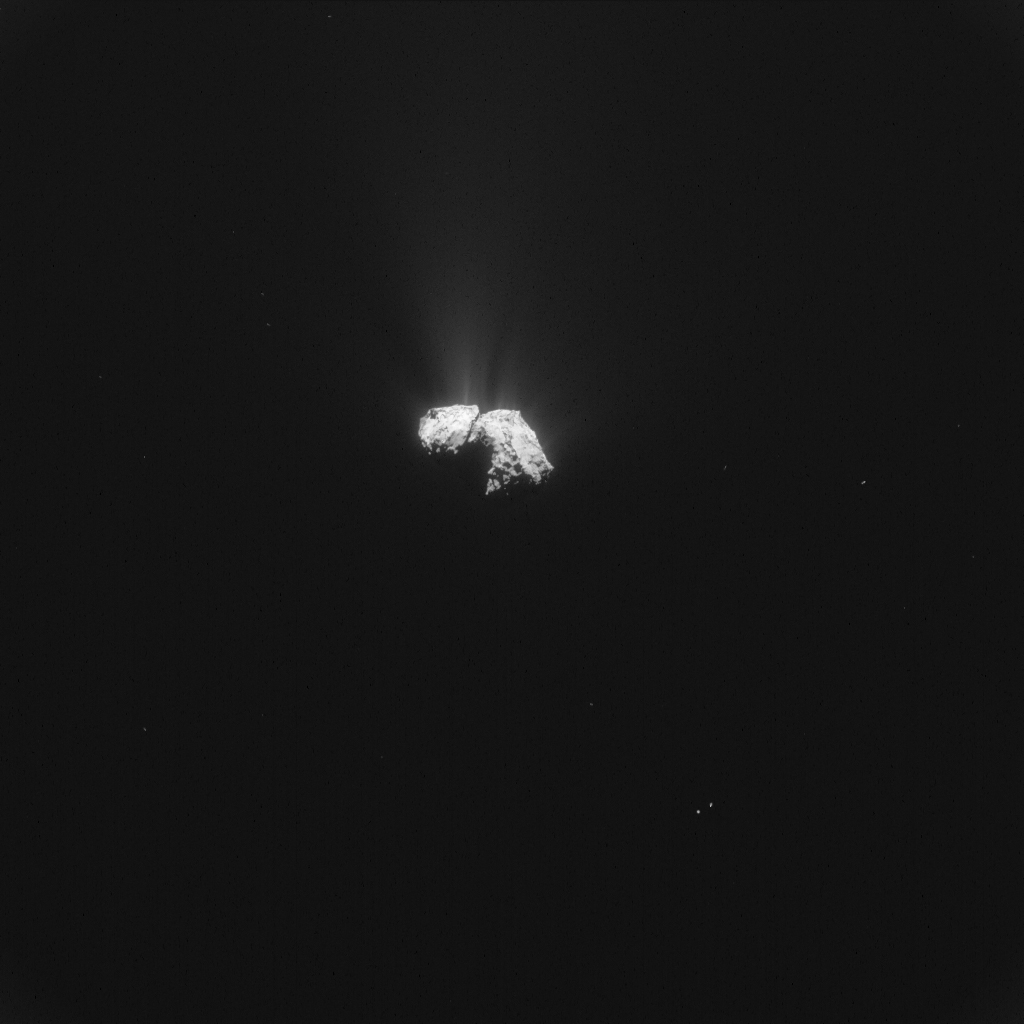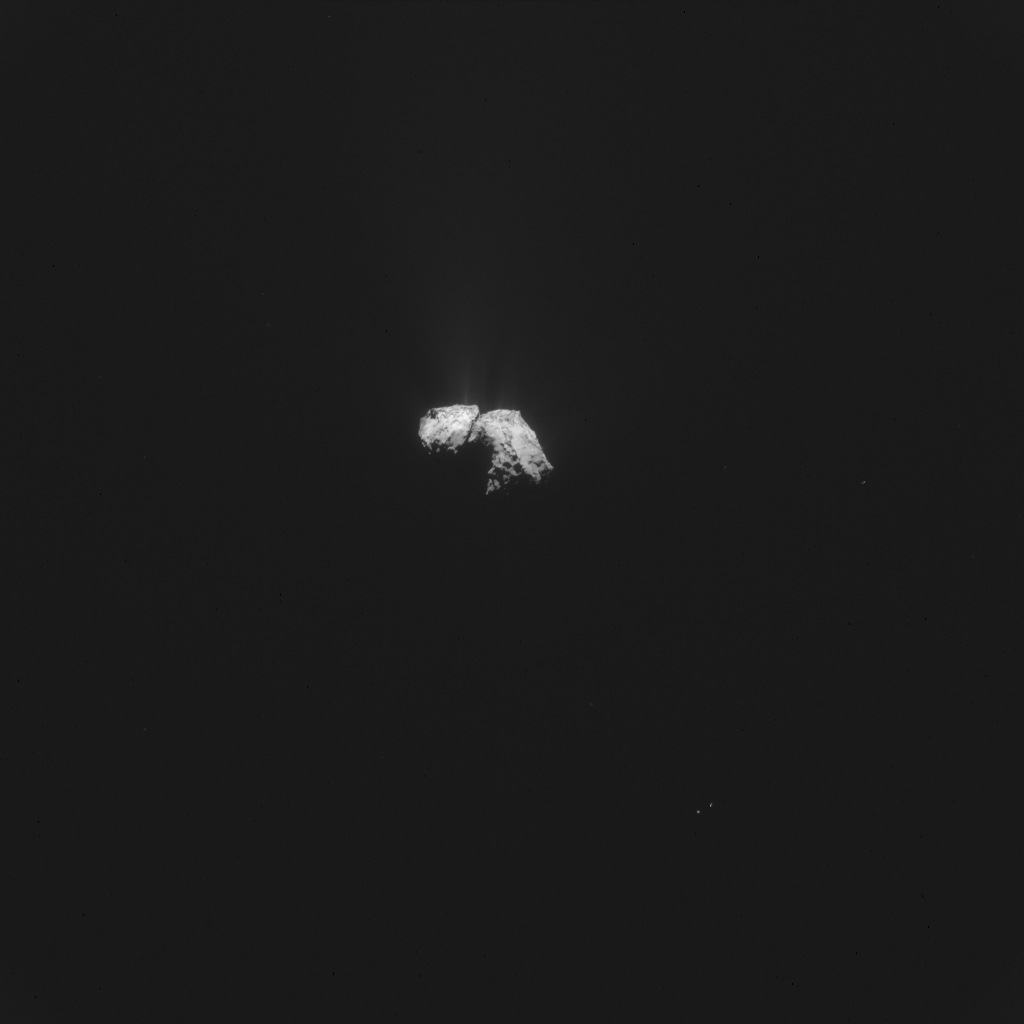Today’s CometWatch entry was taken by Rosetta’s NAVCAM on 18 October 2015, at 433 km from the nucleus of Comet 67P/Churyumov-Gerasimenko.

Single frame enhanced NAVCAM image of Comet 67P/C-G taken on 18 October 2015. Credits: ESA/Rosetta/NAVCAM – CC BY-SA IGO 3.0
The scale is 36.9 m/pixel and the image measures 37.8 km across. The contrast was increased to reveal the comet’s activity, showing the glow of outflowing material from various regions on the nucleus.
In this view, the comet is oriented with the small lobe on the left and the large lobe on the right. Visible on the small lobe are parts of the Hatmehit, Maftet and Ma’at regions and, towards the centre of the image, the small regions of Nut and Serqet. Hints of the Anuket and Hapi regions can be seen on the comet’s neck, while the large lobe presents the circular features of Seth alongside the smooth terrains of Anubis and parts of the complex Atum region.
The original 1024 x 1024 image of today’s CometWatch is provided below:










Discussion: one comment
This photo shows what logan referred to as “quadrature” on both head and body. It’s easier to see if you turn the photo 90° clockwise into ‘upright duck’ orientation.
You can see a sharp 90° turn on the body around the big crater. That forms the apex between the two straight sides of this end of the quadrature for the body lobe. It’s actually more like a diamond or rhombus than a square but the viewing angle has turned a somewhat acute angle into an apparent 90°.
On the head, on the Hatmehit crater rim, there’s a small, dark V pointing towards us. It’s just below the dark shadow in upright duck mode. That defines this end of the Hatmehit crater rim, rather like the sharp turn around the body crater defines this end of the body. In other words, both sharp angles are pointing towards us to within about 15° of each other.
That fairly sharp turn on Hatmehit is what makes the crater less circular and more rhombic. The crater was referred to by one of the OSIRIS papers earlier this year as being “rhombic”. This rhombic nature of Hatmehit is what logan noticed as being strong “quadrature”.
And since both apexes are pointing towards us, it means the diagonals of logan’s quadrature were both aligned towards us in a satisfying symmetry as the two lobes drifted together.
It was the underside of the comet at Imhotep that prompted him to point it out for the body but we can now see it represented on the top side of the body in this photo. This means that the quadrature, or diamond shape, for the body lobe isn’t just a perspective issue, as logan wondered. It’s a real property defining the shape of the body, just like it is for Hatmehit.
Incidentally, shadowing enhances the defining lines of the body quadrature in this photo, but it’s not an illusion. Those lines are there in multiple photos and on the shape model.
//////